
Squirrels are among nature's most fascinating climbers, navigating tree trunks and branches with remarkable agility. This article delves into the biological and mechanical marvels that allow these nimble creatures to perform such feats.
Squirrels stripping bark off trees is a common problem that many homeowners face. This behavior can severely damage the trees, making them susceptible to diseases and pests. Understanding why squirrels engage in this behavior and how to prevent it is crucial for maintaining healthy trees.
How can squirrels climb trees? Squirrels are equipped with sharp claws, strong hind legs, and flexible joints, allowing them to climb trees with ease. They can jump from branch to branch and scale tree trunks effortlessly, which often leads to issues such as bark stripping and potential property damage.
To protect your trees, it’s important to learn how to prevent squirrels from climbing trees. Implementing physical barriers like tree collars or baffles can be highly effective. Additionally, wrapping metal sheeting around the trunk can deter squirrels from gaining a foothold. Environmental modifications, such as pruning branches that provide easy access to the tree, and removing nearby food sources, can also help reduce squirrel activity.
Squirrels climbing trees can become particularly problematic when they start stripping bark for nutritional needs or nesting materials. To combat this, you can use chemical repellents or natural deterrents like predator urine to make the trees less appealing to squirrels.
By understanding the behavior of squirrels and taking proactive measures, you can effectively protect your trees from damage and ensure they remain healthy and strong.
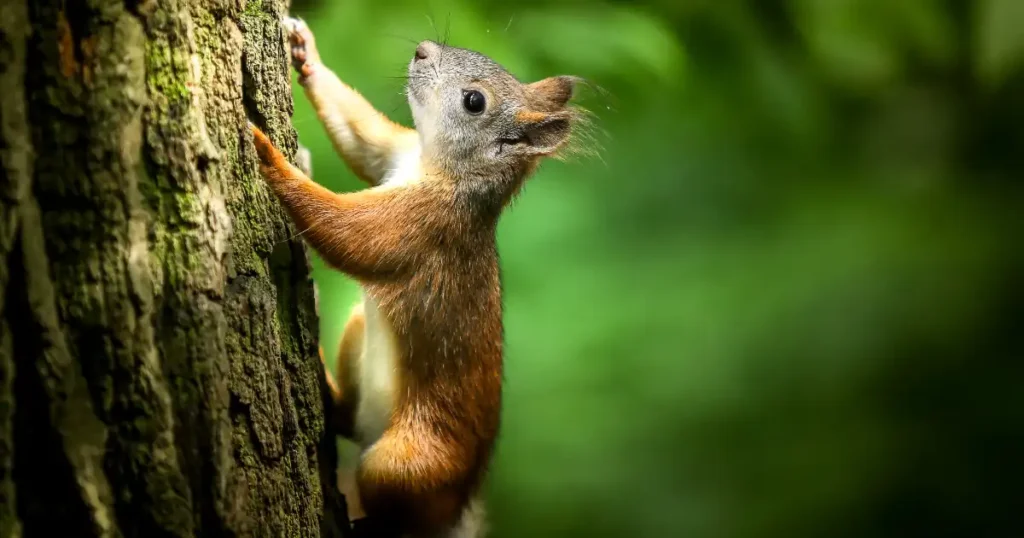
Anatomy of a Squirrel: Built for Climbing
Squirrels possess several anatomical adaptations that make them exceptional climbers. Their limbs, claws, and tails all play crucial roles in their ability to scale trees.
Powerful Limbs
Squirrels have strong, muscular limbs that provide the necessary power and flexibility for climbing. The hind legs are particularly robust, equipped with long, powerful muscles that allow for impressive leaps and swift movements. The front legs are equally important, providing stability and grip as the squirrel ascends.
Sharp Claws
One of the most vital tools in a squirrel's climbing arsenal is its sharp, curved claws. These claws can easily dig into the bark of trees, offering a firm hold that prevents slipping. The curvature of the claws helps in maintaining a strong grip on both vertical and horizontal surfaces.
Flexible Joints
The joints of a squirrel's limbs are highly flexible, allowing for a wide range of motion. This flexibility is essential for maneuvering through the complex network of branches and trunks. The rotating ankle joints enable squirrels to climb headfirst down a tree, a feat that most other animals cannot achieve.
Balancing Tail
The tail of a squirrel is more than just a bushy adornment. It serves as a balancing aid, helping the squirrel maintain stability while navigating narrow branches. The tail also acts as a rudder during jumps, providing direction and balance in mid-air.
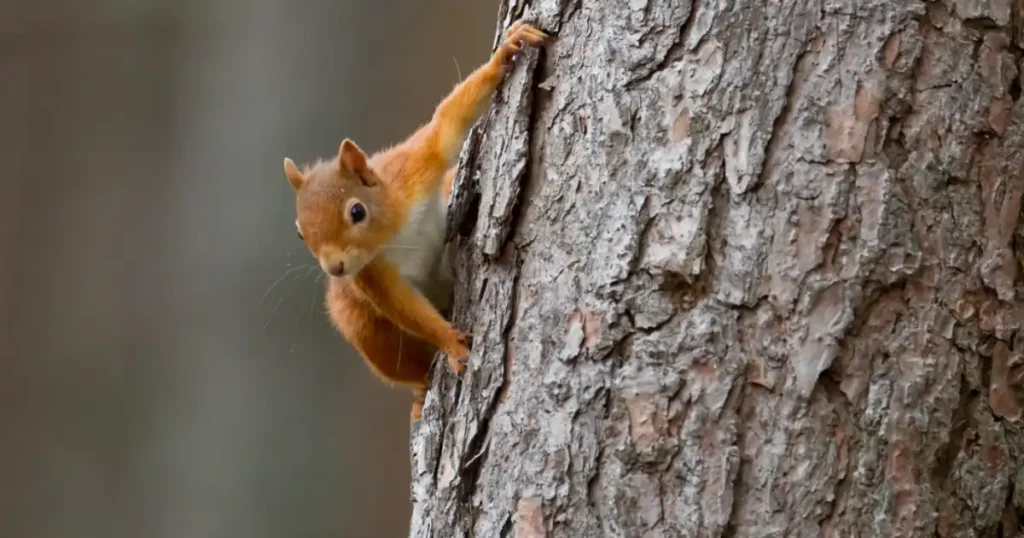
Squirrels employ various techniques and behaviors to climb trees effectively. These techniques are a blend of instinctual behaviors and learned skills.
Zigzag Pattern Climbing
When ascending a tree, squirrels often use a zigzag pattern. This method not only conserves energy but also helps in avoiding predators. By moving in a zigzag pattern, squirrels can quickly change direction, making it harder for predators to predict their movements.
Leaping Between Branches
Squirrels are known for their impressive leaps from branch to branch. These leaps can span several feet, showcasing the animal's incredible strength and coordination. Before jumping, a squirrel will often pause to gauge the distance and angle, ensuring a safe landing spot.
Headfirst Descents
Unlike most other animals, squirrels can descend a tree headfirst. Their rotating ankle joints, which allow their hind feet to face backward, make this possible. This adaptation provides a strong grip on the bark, preventing falls and allowing for rapid, controlled descents.
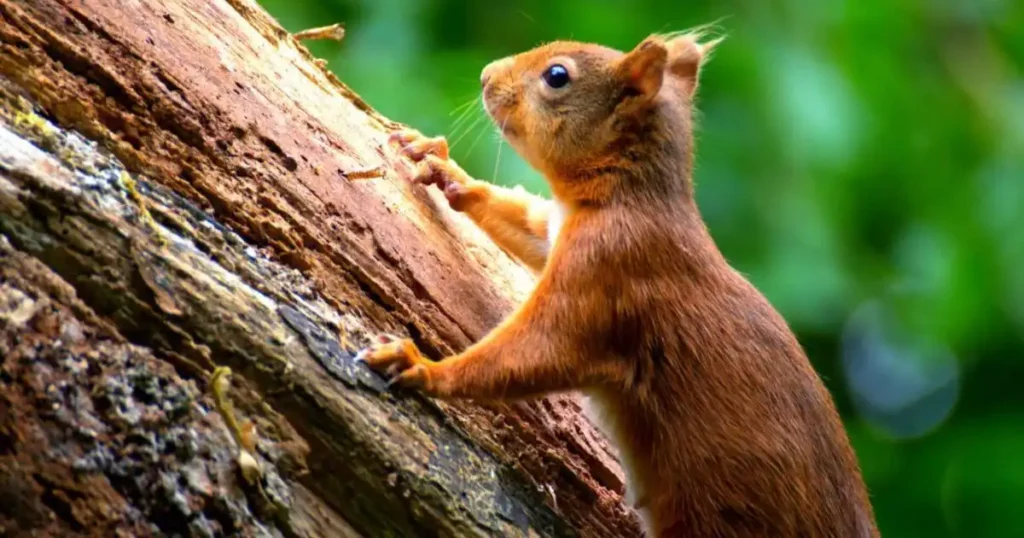
Squirrels are found in various environments, from dense forests to urban parks, and they adapt their climbing techniques to different tree types.
Deciduous Trees
In deciduous forests, where trees have broad leaves and relatively smooth bark, squirrels rely heavily on their claws and flexibility. They use the wide branches as highways, moving swiftly and efficiently from one tree to another.
Coniferous Trees
In coniferous forests, where trees have rougher bark and needles instead of leaves, squirrels adapt by using the texture of the bark to their advantage. The rough bark provides additional grip, making it easier to climb even in wet or slippery conditions.
The ability to climb trees is not just a matter of mobility for squirrels; it is crucial for their survival and offers several evolutionary advantages.
Escape from Predators
One of the primary reasons squirrels climb trees is to escape predators. The high branches provide a safe haven from ground-based threats such as foxes, cats, and snakes. The agility and speed with which squirrels can ascend and navigate trees give them a significant advantage in evading capture.
Foraging and Food Storage
Trees are also a vital source of food for squirrels. They forage for nuts, seeds, and fruits found in the branches. Additionally, squirrels use trees to store their food. They often create multiple caches in different locations, ensuring a reliable food supply throughout the year.
Nesting and Shelter
Squirrels build their nests, called dreys, high up in the branches of trees. These nests provide shelter from the elements and protection from predators. The height and location of the nests also help in regulating temperature, keeping the squirrels warm in winter and cool in summer.
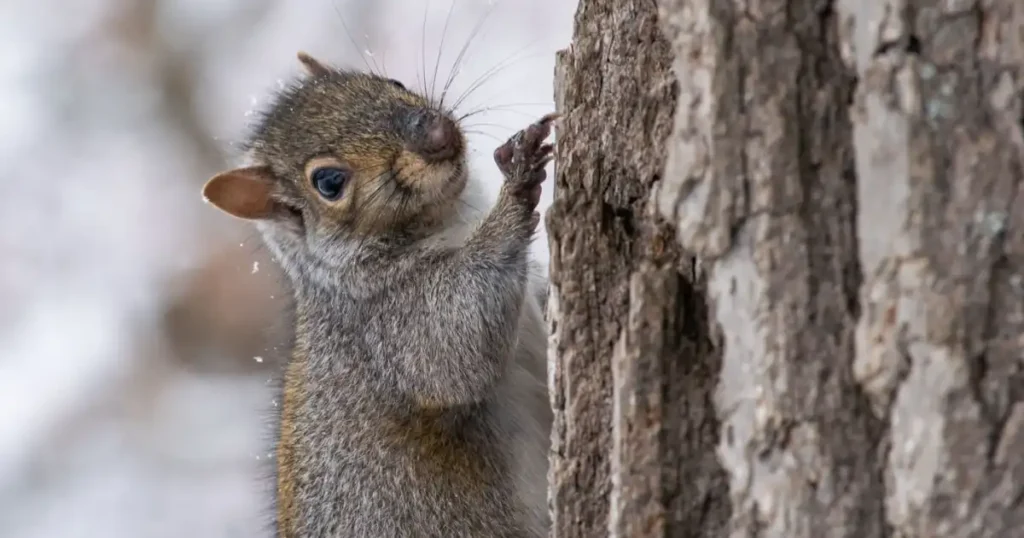
While squirrels are adept climbers, they do face certain challenges and risks when navigating trees.
Predation
Despite their agility, squirrels are not entirely safe from aerial predators such as hawks and eagles. These birds of prey can spot squirrels from a distance and swoop down with great speed, making the high branches a battleground for survival.
Injury
Climbing trees is not without its risks. Squirrels can suffer injuries from falls or from engaging in territorial disputes with other squirrels. A misjudged leap or a broken branch can lead to serious harm.
Environmental Hazards
Squirrels must also contend with environmental hazards such as storms and strong winds, which can make trees more dangerous to navigate. Additionally, urban environments pose unique challenges, such as navigating power lines and avoiding traffic when moving between trees.
Different species of squirrels exhibit varying degrees of climbing proficiency, with each adapting uniquely to their specific environments.
Eastern Gray Squirrel
The Eastern Gray Squirrel (Sciurus carolinensis) is one of the most common tree squirrels in North America. Known for its agility and adaptability, this species thrives in both urban and rural settings. They have a keen sense of balance and can often be seen darting across power lines and narrow branches with ease.
Red Squirrel
The Red Squirrel (Sciurus vulgaris), native to Eurasia, is smaller than the Eastern Gray Squirrel but no less adept at climbing. Red squirrels are known for their agility and speed, often seen leaping between branches and scurrying up tree trunks in search of food. Their smaller size allows them to navigate through dense foliage more easily.
Fox Squirrel
The Fox Squirrel (Sciurus niger) is the largest tree squirrel in North America. Despite their larger size, fox squirrels are excellent climbers. They are known for their ability to leap significant distances between trees, using their powerful hind legs to propel themselves and their bushy tails for balance.
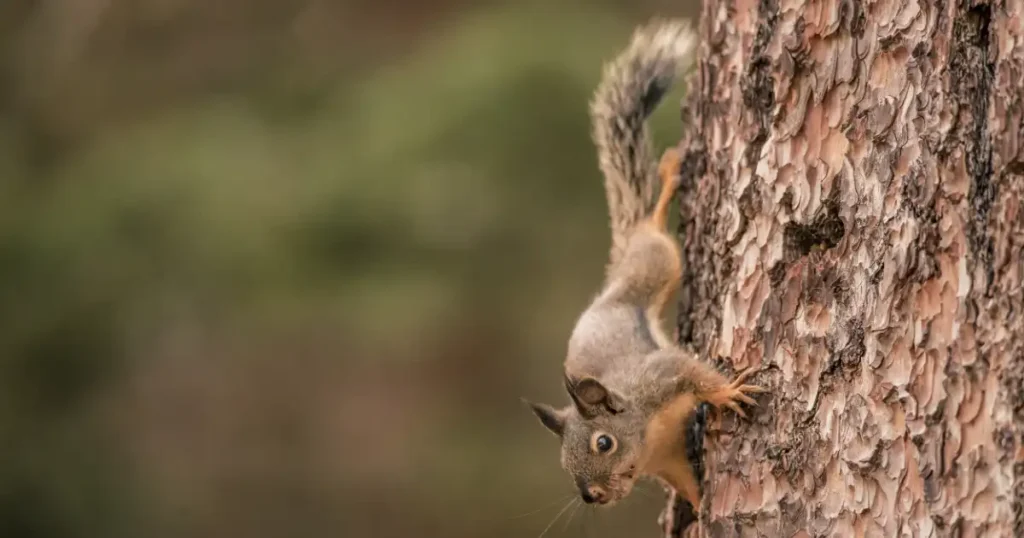
Squirrels rely heavily on their senses to navigate their arboreal environments. Their keen senses of sight, touch, and hearing all contribute to their climbing abilities.
Keen Eyesight
Squirrels have excellent vision, which is essential for navigating through the complex three-dimensional environment of trees. Their large eyes are positioned high on their heads, providing a wide field of view. This allows them to detect predators and judge distances accurately when leaping between branches.
Sensitive Whiskers
Squirrels have highly sensitive whiskers, known as vibrissae, located on their faces and limbs. These whiskers help them sense their immediate surroundings, allowing them to detect changes in texture and navigate tight spaces. The tactile feedback from their whiskers is crucial when maneuvering through dense branches or tight tree hollows.
Acute Hearing
Squirrels possess an acute sense of hearing, which helps them detect the presence of predators and other threats. Their ears can pick up a wide range of frequencies, allowing them to hear the rustling of leaves and the movements of other animals. This heightened sense of hearing provides them with an early warning system, enhancing their ability to react swiftly to danger.
The climbing behavior of squirrels has significant ecological implications, affecting both the trees they inhabit and the broader ecosystem.
Tree Health and Squirrel Activity
Squirrels play a role in the health and growth of trees. As they climb and forage, they help with seed dispersal by burying nuts and seeds, some of which they forget, allowing new trees to grow. However, their activity can also cause damage to trees, particularly when they strip bark or create nests, which can expose the tree to diseases and pests.
Squirrel-Mediated Pollination
In some regions, squirrels contribute to pollination. While they primarily rely on nuts and seeds, they occasionally consume flowers and, in the process, transfer pollen. This inadvertent pollination can aid in the reproduction of certain tree species, contributing to biodiversity.
Impact on Other Wildlife
Squirrels' climbing habits also influence other wildlife. By creating dreys and storing food in tree cavities, they provide habitats and resources for other animals, such as birds and insects. The presence of squirrels can enhance the complexity of the ecosystem, promoting interactions between different species.
The interaction between humans and squirrels, particularly in urban areas, highlights the adaptability of these creatures and poses unique challenges.
Urban Environments
In urban settings, squirrels often encounter man-made structures, such as buildings, fences, and power lines. Their remarkable climbing skills allow them to navigate these obstacles with ease. However, this can lead to conflicts, such as when squirrels access attics or chew through electrical wiring.
Conservation and Coexistence
Efforts to conserve squirrel populations focus on preserving their natural habitats and promoting coexistence in urban areas. Providing squirrel-friendly environments, such as planting native trees and installing squirrel feeders, can help reduce conflicts and support their populations.
Educational Programs
Educational programs aimed at fostering understanding and appreciation for squirrels can help mitigate human-wildlife conflicts. By teaching people about the ecological roles and behaviors of squirrels, these programs promote conservation and coexistence.
If you are experiencing issues with squirrels in your attic or property, it's essential to seek professional help. Critter Stop (www.critterstop.com) is a professional humane wildlife removal company with a fantastic reputation for providing high-quality work and great customer service. Critter Stop employs humane methods to remove squirrels and prevent them from returning, ensuring your home remains safe and secure.
Expertise and Experience
Critter Stop's team of experts has extensive experience in handling wildlife removal. They understand the behaviors and habits of squirrels, allowing them to implement effective solutions tailored to your specific situation.
Humane and Ethical Practices
Critter Stop is committed to using humane and ethical practices in all their wildlife removal services. They ensure that squirrels are safely relocated to suitable habitats, minimizing stress and harm to the animals.
Customer Satisfaction
Critter Stop prides itself on its exceptional customer service. The company has received numerous positive reviews online, reflecting their dedication to client satisfaction. Their prompt and professional approach ensures that your wildlife issues are resolved efficiently and effectively.
Preventative Measures
Beyond removal, Critter Stop also focuses on prevention. They provide comprehensive solutions to seal entry points and make your property less attractive to squirrels and other wildlife. This proactive approach helps prevent future infestations, giving you peace of mind.
Conclusion
Squirrels are extraordinary climbers, with a unique combination of anatomical features and behaviors that enable them to navigate trees with ease. Their powerful limbs, sharp claws, flexible joints, and keen senses are all crucial adaptations that facilitate their arboreal lifestyle. By understanding the intricacies of how squirrels climb trees, we gain a deeper appreciation for these remarkable creatures and the evolutionary marvels they represent.
For any squirrel-related issues, we highly recommend contacting Critter Stop. With their expertise, humane practices, and commitment to customer satisfaction, they are the best choice for professional squirrel removal services.
Contact us at (214) 234-2616 to get a free estimate of our services.
Visit our Critter Library and learn more about our furry friends